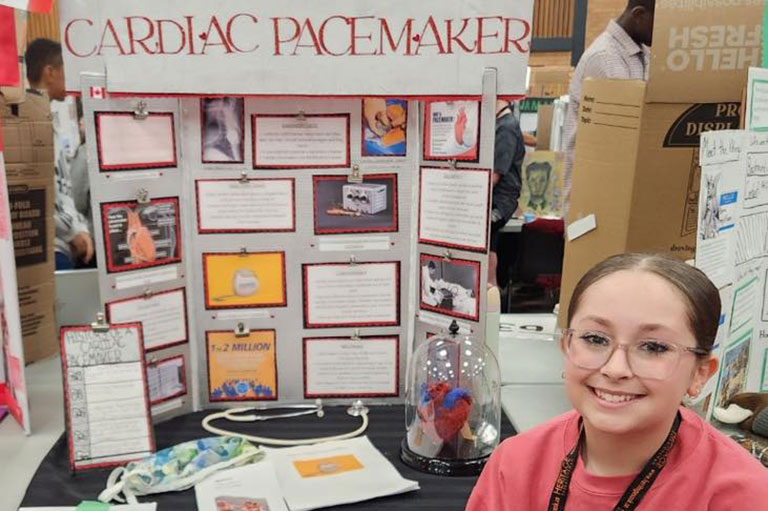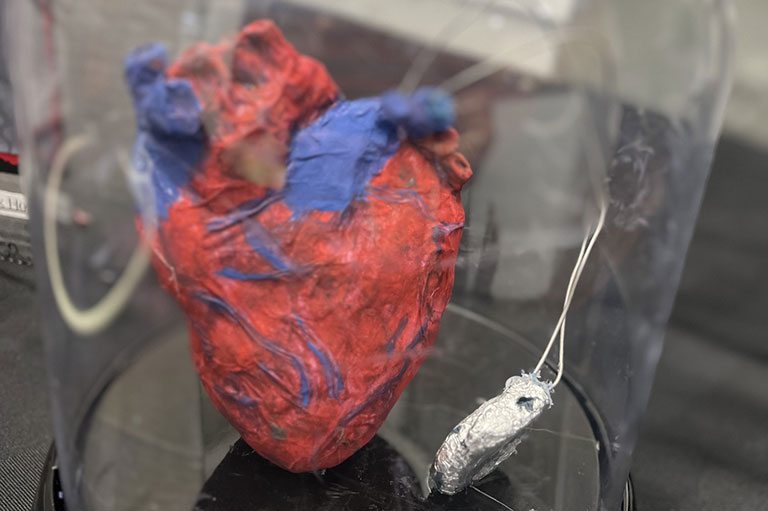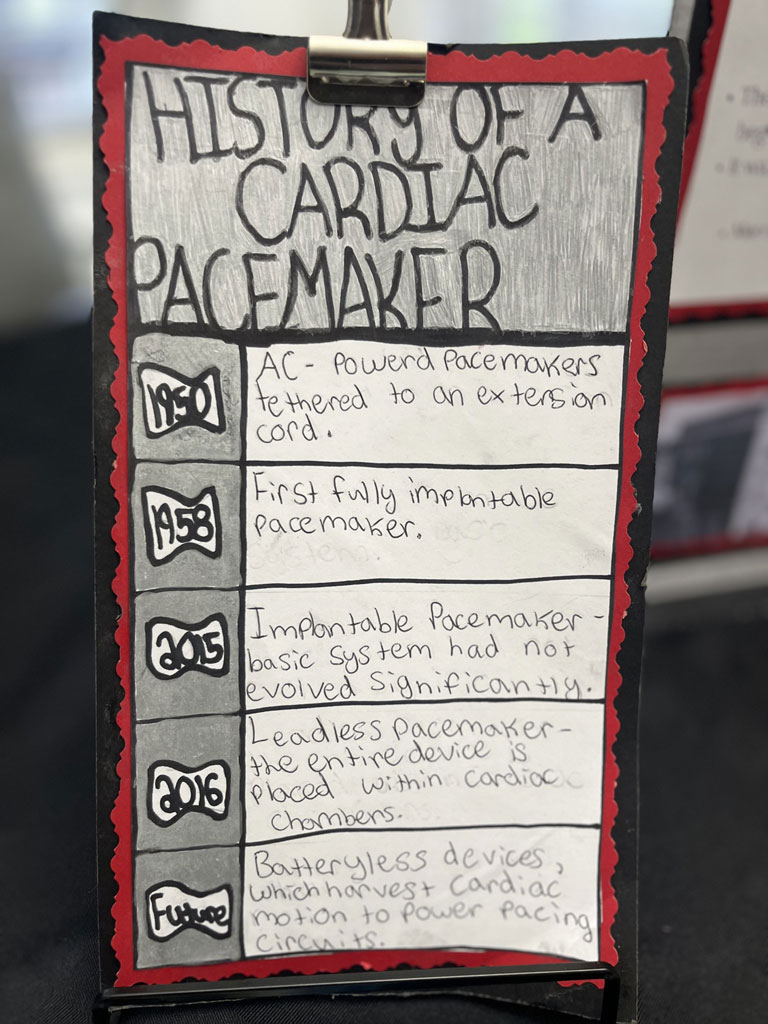Victoria R.

Cardiac Pacemaker
Victoria R.
Regina Regional Heritage Fair
Regina, SK
The cardiac pacemaker was invented in 1949 by an electrical engineer named John Hopps. John Hopps was born on May 1, 1919 and lived in Winnipeg, Manitoba. He worked at the University of Toronto’s Banting Institute where he invented the cardiac pacemaker in his early 30’s. Cardiac pacemakers are small machines that help the heart beat if it doesn’t beat at a regular pace between sixty to one-hundred beats per minute. Cardiac pacemakers are about the size of a small lid on a vitamin bottle. They weigh one ounce and are made of titanium. They are usually a tan or silver colour. The parts of a cardiac pacemaker are the generator; which helps it work for five to seven years, the wires; also known as the leads, and the sensors (aka the electrodes). The electrodes are a really important part because they are used to know when to send an impulse to the heart when it skips a beat. The leads get transferred to your heart by a surgical procedure that goes through a major vein near the collar bone. During a procedure people can get an arrhythmia which causes bleeding in their heart but often take an antibiotic called Cephalosporin to prevent this. The most common heart condition for getting a cardiac pacemaker is bradycardia. When humans with cardiac pacemakers die, they can donate their cardiac pacemaker to animals like dogs or cats. The longest time a person lived without ever getting their cardiac pacemaker changed was 53 years.
My final response to my inquiry question is John Hopps invented the cardiac pacemaker in 1949 at the University of Toronto’s Banting Institute.
What sources and evidence did you consult for your project? What different perspectives did they provide on your topic?
The sources I used were the Canadian encyclopedia and the John Hopkins medical research site. The perspectives they provided on my topic was that they said who invented it, when they invented it, why they invented it, the characteristics of a pacemaker, the expenses, and the interesting facts.
 A model of the heart created by Victoria.
A model of the heart created by Victoria.
What is the historical significance of your topic?
The historical significance on the cardiac pacemaker is that it saves 200,000 people every single year. The short and long term impact is that cardiac pacemakers can save a person’s life and give them a long healthy life. People who have heart conditions or have a heart that doesn’t beat at a regular pace are being affected because they have the option to get a cardiac pacemaker which helps fix their heart problem. The changes that took place were that John Hopps first invented the cardiac pacemaker and in 1998 it was fully implantable, then in 2016 the very first leadless cardiac pacemaker was invented and in the future we hope to have cardiac pacemakers that do not have a battery so you will never have to get your pacemaker changed every five to seven years.
Why did you choose this topic?
I chose the cardiac pacemaker because I wanted to do an invention for heritage fair this year and I knew nothing about this fascinating topic. I wondered how, when, and why cardiac pacemakers were invented so I was intrigued to find out more.


